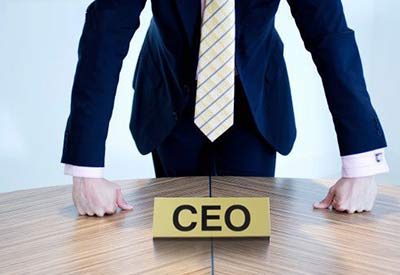E-Commerce: Is Your Warehouse Really Ready?

Aug 13, 2021
By David Gordon
Over the past couple of years, more distributors have commerce-enabled their websites and distributors are reporting an increase in the percentage of sales that web-ordering represents.
For most the orders are coming from existing customers. However, some distributors are actively targeting new business … from opportunistic orders from contractors, soliciting specific product categories, or identifying industrial and institutional markets to pursue. Some are accepting orders from John Q. Public either directly or via Amazon.
eCommerce can be an omni-service approach to your customer base, and with effort it can be an incremental revenue stream. But when eCommerce is small, the operational impact of it is nominal to a distributor’s business. As it grows, an analysis of the types of orders and the operational impact may be warranted. The key is segmenting each type of order (the channel it comes from) to determine if it is profitable.
An article discussing an eCommerce fulfillment center for CEF, the UK parent company of City Electric, provoked the thought. Click here if you want to see a video on their system. Click here to see the CEF website which is expected to drive the sales volume to justify the warehouse.
Recognizing that the order type can be different, we asked noted Dick Friedman, who has helped electrical distributors with their warehouse configuration, for his thoughts on optimizing a distributor’s warehouse to support eCommerce in conjunction with its core business.
Dick’s insights
Although most electrical distributors obtain a small percentage of sales through their web sites, a web site that enables house accounts to do inquiries and place orders is not true e-commerce. And for those with significant eCommerce expectations, their traditional warehouse arrangement and processes may not be suitable for e-commerce.
E-Commerce is, in my opinion … the 24×7 fully automated process of the “public” and house accounts performing item availability and price inquiries, generating priced quotes, entering priced orders, generating invoices, paying by credit card (or on account), and inquiring into quotes, orders, open invoices and A/R items. House accounts are established customers either given a line of credit or paying by cash or check; “public” refers to consumers, who pay by credit card. All printed documents must contain one or more bar code representations. If you solicit public (new) and consumer accounts, be prepared for extensive less-than-carton-sales to the public.
No people are needed for quoting and order entry. However, the purchasing department may need to order larger quantities (and perhaps new items) than without e-commerce due to the variability of the online ordering cadence as your eCommerce business grows. People are also needed to respond to phone calls and messages sent via the web site. And people will almost certainly be needed to add information to the database about each new item offered for sale.
The ERP and e-commerce software must contain all needed functions, be fail-safe and be able to handle dozens of simultaneous transactions; no employees need be around. And there must be a backup power supply for the server(s) and redundant internet lines with automatic switching capability.
E-commerce warehouse
If sales increase significantly, it may be necessary to add shelving to store the larger volume of inventory, and/or store more, or different, items on the same shelves. If public sales are significant, products for them may need to be stored separately from products for house accounts, but this involves duplicate shelving and perhaps racks, and extra put away and picking time. Neither action is necessarily required unless specific SKU activity warrants.
On the shelves, bar coded product and (fixed) location labels must be affixed to cross beams and reading “guns” must be able to read labels on the highest cross beam.
• Receiving — the receiving process should not change when true e-commerce is involved; bar code scanning would continue to be used at every step. However, if the public is allowed to back order (e.g., a single circuit breaker), do not separate those backordered items from the others as is now done for house accounts.
• Put away steps should not change, but pallets of received purchases should not sit in aisles (as is now done) but be put away immediately after receiving; consumers expect their orders to be filled the same day as entered.
• Replenishment must be done well before picking starts. The ERP system should use data for on-hand inventory, allocated orders, and historical unit sales to determine when to direct a replenishment for an item.
• Order entry — when selling to the public, the cut-off time might need to be much later than at present, which means that a second shift might be needed (if there isn’t one now). The public might not be allowed to order some items (e.g., 10′ lengths of conduit), and a message explaining the reason should be displayed during order entry; this is not a lost sale. If someone tries to order more than the quantity available, the system should save the quantity not available and whether the customer or prospect bought a partial quantity, or any item at all. These data should be transmitted to the purchasing department, which would determine if a sale was lost.
• Picking — all consumer sales orders should be picked as soon as they are entered; no waiting until a queue of orders exists before selecting one to pick.
• Checking and packing — the packing and checking area should be divided into two sections: one for public sales, which involve smaller and lighter items (e.g., one duplex Decora outlet); the other for house account sales (e.g., a breaker panel).
• Shipping — because e-commerce usually involves numerous small-quantity orders, LTL carriers (e.g., UPS) will be used for shipping. The ERP software, or an interface to a carrier system, must be able to print shipping labels, in some cases, a bill of lading.
• Returns — the ERP system must enable customers to request an RMA and generate an RMA document that the customer can print. A warehouse area for only public returns is required. As soon as a return is received its RMA must be verified, the item inspected, and for re-salable items a credit issued to the credit card used for the purchase.
Preparing the warehouse for e-commerce
Here are some tips that can help now and when/if e-commerce is implemented.
• Organization — store the most frequently picked items closest to the packing area, and where items are stored by “family” or vendor line, store faster moving families closer to that area.
• Receiving — if a unit of measure in PO data is not the same as that on the corresponding packing list, the receiver should note that discrepancy on the packing list or record it via a scanner.
• Put Away — if several items are stored on the same shelf, the scanning gun might have to display a 4-parameter location for that item — aisle, bay, shelf, slot.
• Replenishment — the time to replenish picking locations from bulk/overflow is before daily picking begins.
• Picking — displaying all items on a scanning device may not minimize picking time. If there is a great variation in item size or weight, split the order into two or more displays — one for the smaller items, and one for the larger/heavier items.
• Packing and checking — to avoid repeating mistakes already made, an order checker should not be the same person who picked the order being checked.
• Loading — to save time and reduce mistakes, the smaller, lighter items and packed cartons of an order should be placed on rolling shelves that are used only for moving outbound orders, not picking. Each rolling shelf can be pushed into or near the appropriate truck.
E-commerce is here to stay, and wholesale distributors must give serious thought to participating in the surge and structuring their warehouse appropriately to ensure profitable order fulfillment.
Dick Friedman focuses on helping distributors optimize their warehouse operations. He helps electrical distributors determine if a particular warehouse technology should or should not be obtained as well as helps distributors prevent warehouse mistakes that lose sales and customers, even if they are using barcoding.
With eCommerce increasing (recent CMG research reveals that 65-75% of contractors have purchased some material online), and DIY companies actively promoting eCommerce to contractors, distributors need to be cognizant of the impact on their operations. Are the orders profitable? Analysis of the order generation process, order metrics and evaluating warehouse operations will be essential to ensure that John Q Public’s, non-customer periodic orders and perhaps smaller customer orders (or more frequent orders) are handled efficiently and profitably.
David Gordon is President of Channel Marketing Group. Channel Marketing Group develops market share and growth strategies for manufacturers and distributors and develops market research. CMG’s specialty is the electrical industry. He also authors an electrical industry blog, www.electricaltrends.com. Channel Marketing Group does not engage with clients on detailed pricing strategies, however, given that pricing is a critical element of sales, marketing and growth planning, we do get asked about the topic and can share opinions and refer to those who focus on the area as well as share anecdotes. David Gordon can be reached at 919-488-8635 or dgordon@channelmkt.com.











